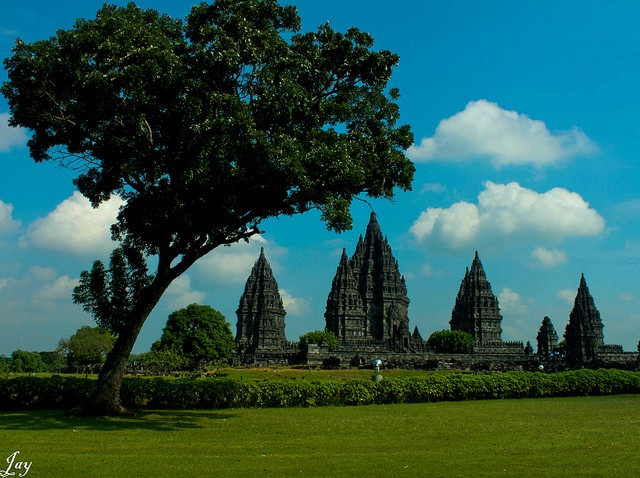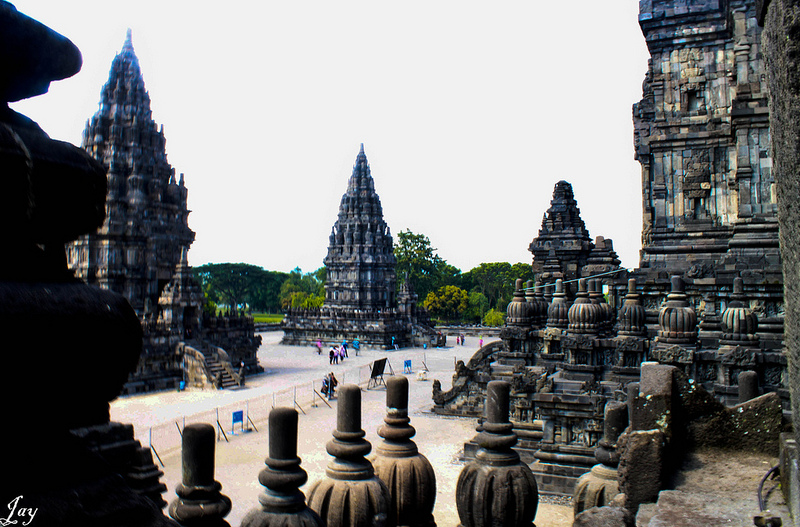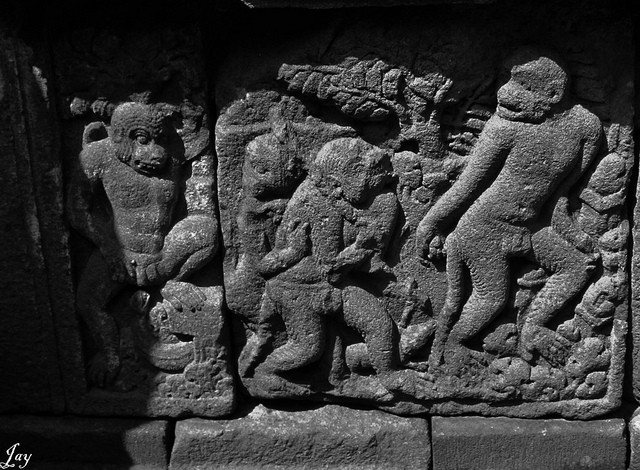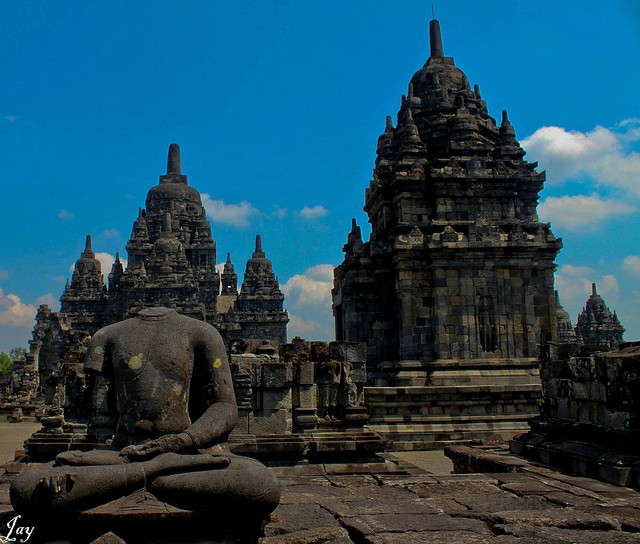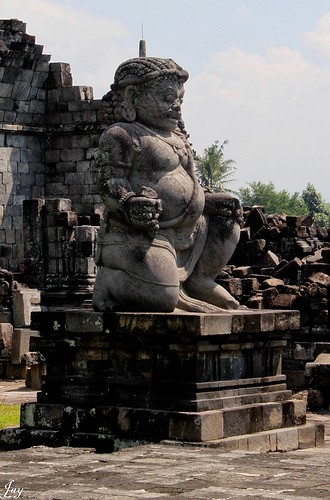We arrived in Yogyakarta (a.k.a Jog-Jakarta) after a short flight from Jakarta.30 min and 55,000 IDR later, we arrived at the guest house. Staying in guest houses is an interesting experience in itself as you get to meet a lot of people from across the world. I met some Germans, French and a lady from a previously unheard “country”-Guernsey.
After settling down we made plans for the next 3 days. The primary objective was to climb Mt. Merapi (a live volcano) and visit the Prambanan and Borobudur temple complexes.
We started checking with different operators to arrange for transport to these places. In the end, the travel liaison at the guest house arranged for all the travel at a very good price, and it was decided to visit Prambanam first. There are various tour operators in Jogja, check out with a few and you may get a very good package. This normally includes the entrance fee to the monuments. Travel within the city is cheap and always insist on getting back the change.
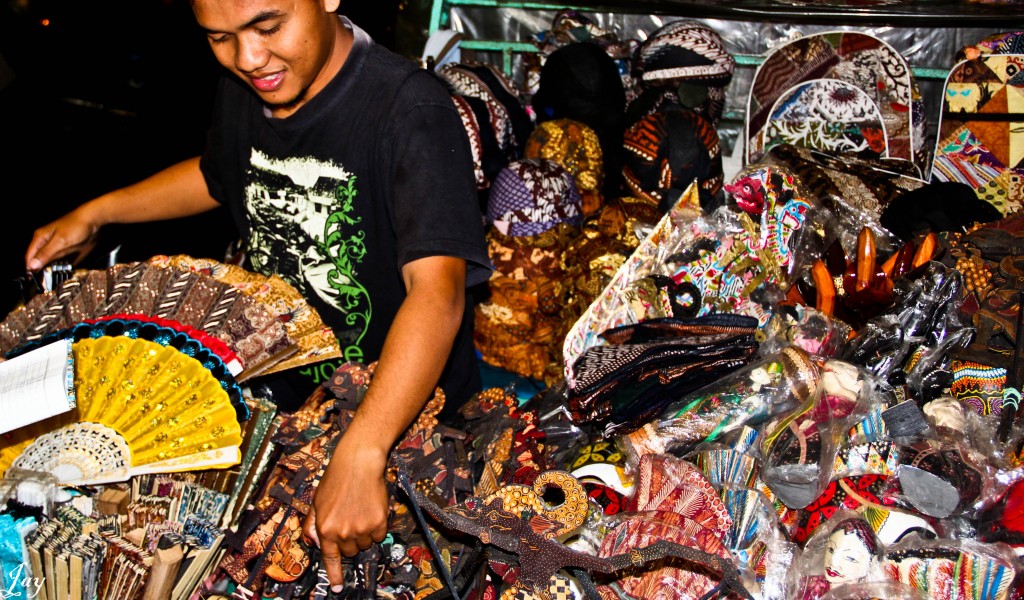
Street Hawkers
Since the tour started the next day, we had the evening to ourselves. We made the most of it by visiting Malioboro Street, the shopping haven of Jogja. It is basically a street market with a few malls scattered among the scores of small stalls selling a variety of goods, stacked on the sidewalks.
Like to bargain? Then this is the place for you.When in Malioboro, bargain and bargain hard. Its fun and you may get some amazing traditional hand crafted stuff at a very good price.You can buy trinkets, clothes and souvenirs at throwaway prices and its fun interacting with the locals and haggling over prices. The streets are lined with pedal powered and horse-drawn carts which are available for hire and are traditional (if not preferred)) mode transportation.
Get used to the Indonesian currency .I was so confused that I underpaid, almost all the time and the locals had to tell me to give the correct amount.
In the evening several open-air street side restaurants run along the street and serve a variety of Indonesian delicacies. All my previous encounters with Indonesian cuisine were spicy but, I guess Jogja has a bit of a sweet tooth.
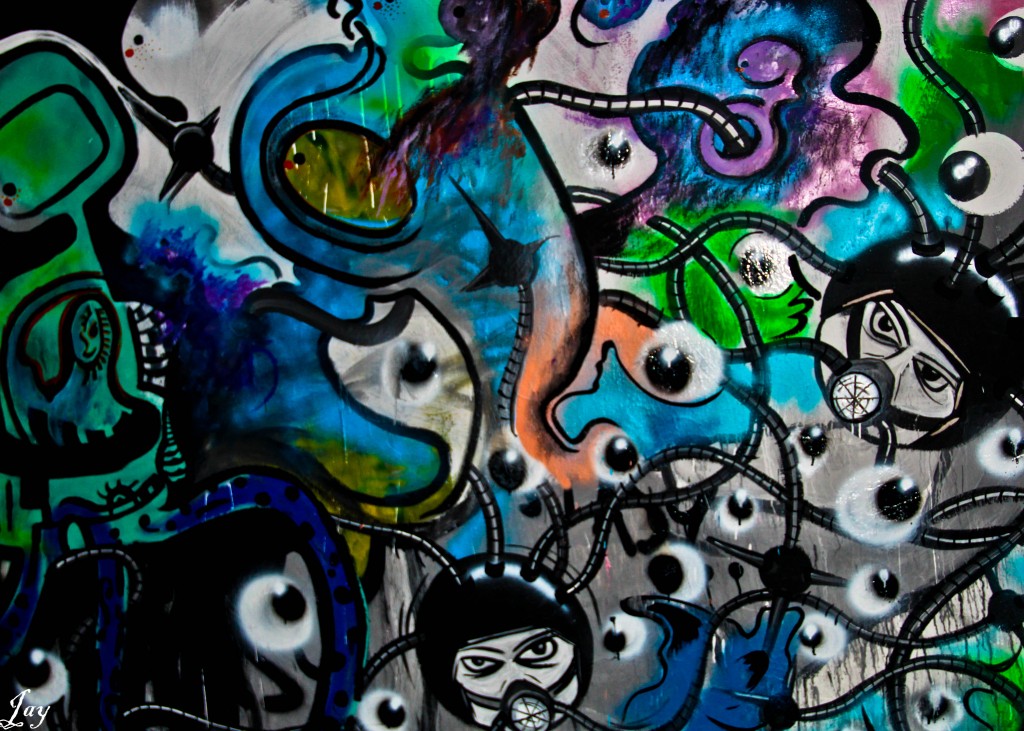
Graffiti
Another interesting fact about Yogyakarta is its wall murals. Most of the walls across the city will be lined with Graffiti and murals. The graffiti is both interesting and makes the place look lively.
The next day at 8 AM we started for Prambanan which lies near to the airport. Prambanan is often acknowledged as the ‘Angkor of Java’, and rightly so. The shape and design of the two differ, but there are lots of similarities in the architectural bearings of the two places.
We were accompanied by two French couples to Prambanan, and they wished to have a more detailed explanation of the place. Hence we grouped up and hired a guide.
The Prambanan is devoted to the Vedic trilogy of Brahma, Vishnu and Shiva and is a Shaivite shrine. It has 6 main structures and is dotted by concentric rectangles of complementary temples (only 2 of scores of these exist today). The Six main structures are temples devoted to Brahma, Vishnu and Shiva and their respective vehicles (vahanas) Hamsa, Garuda and Nandi. Swan, Shiva and Garuda temples were damaged in earthquakes of ’06 and are closed for public entry.
In the Brahma and Vishnu temples, you can find stories from Ramayana and Krishna’s life, etched on the stone bas-reliefs. There are larger than life statues of Brahma and Vishnu in the respective temples. The Nandi temple has a statue of ‘the Bull’ and can be said to be life-size.
The structures are built with interlocking stones, and that is probably the reason of the destruction of the structures by earthquakes. There are some other temples nearby, but Sewu is the only one worth a visit. The others are in various stages of restoration and would probably be ready in the future. It is a complex of Buddhist temples with the peripheral structures devoted as personal sanctuaries for mediation and contemplation. Sewu like Prambanan and Angkor is a vast jig saw puzzle with missing pieces. A pair of gargoyles flank the entrance and the on the left. This place attracts fewer visitors than Prambanan and you may get the place to yourselves.
There is a sort of road-train which ferries from Prambanan to Sewu. This can be used to save both time and energy. Also, there is a theatre which hosts the Ramayana ballet (a traditional Javanese dance).
Attached to the complex there is a market which sells food and souvenirs and is can be avoided if there is not much time at hand. The complex is open from 6 AM to 6 PM but 4 to 5 hours is enough to see the place .Sunset and night lit Prambanan would be a sight to watch and is recommended.
After a quick ‘Narial Pani’ we were off to Borobudor in the afternoon and just then, it started pouring and the downpour continued for the next hour.
We headed to Borobudur, our fingers crossed.

